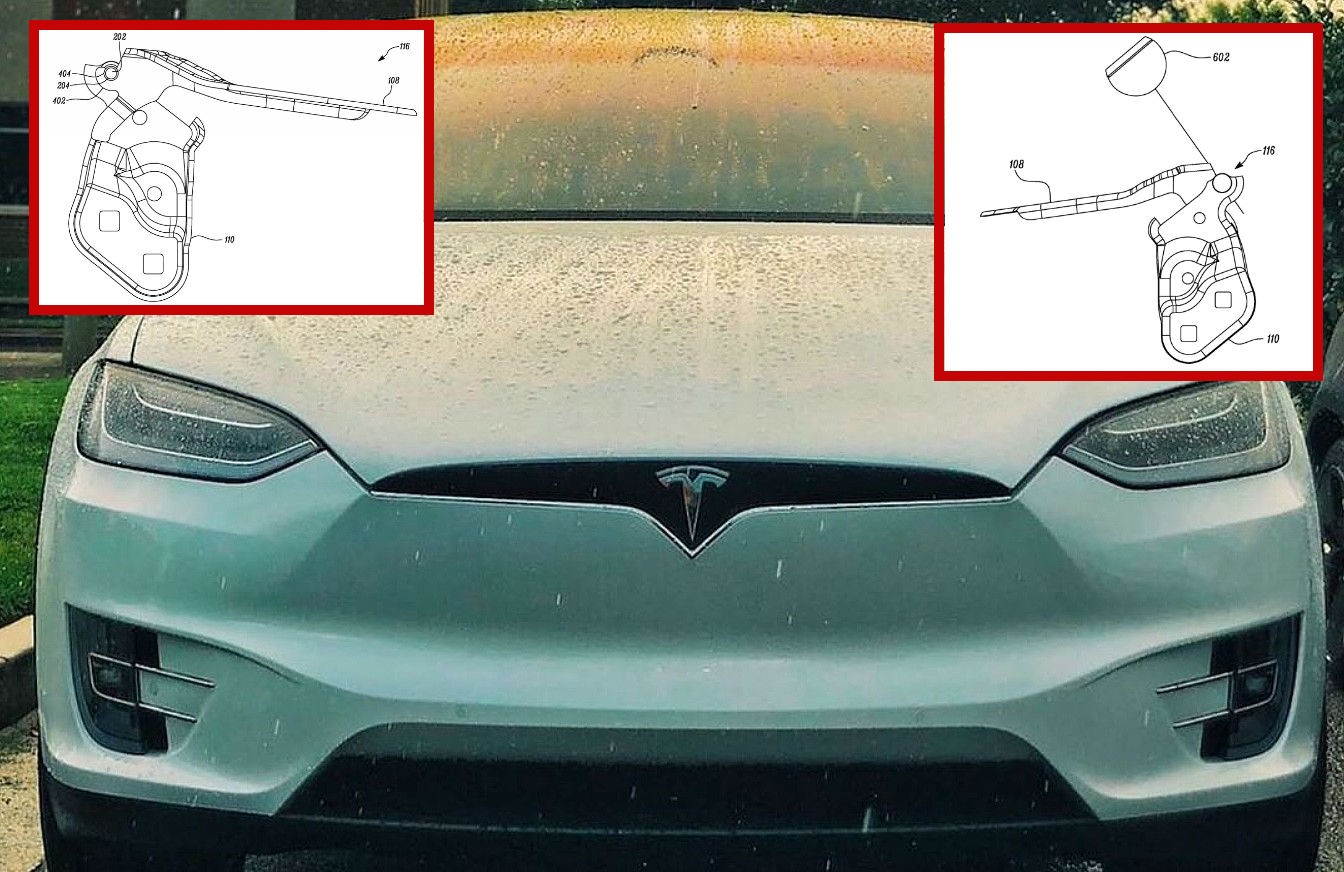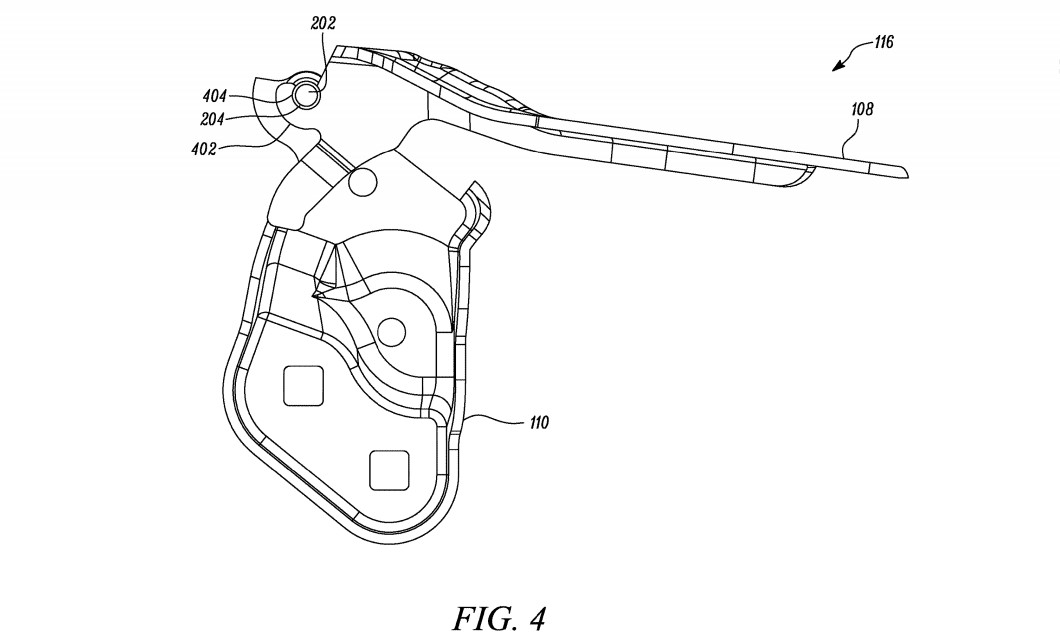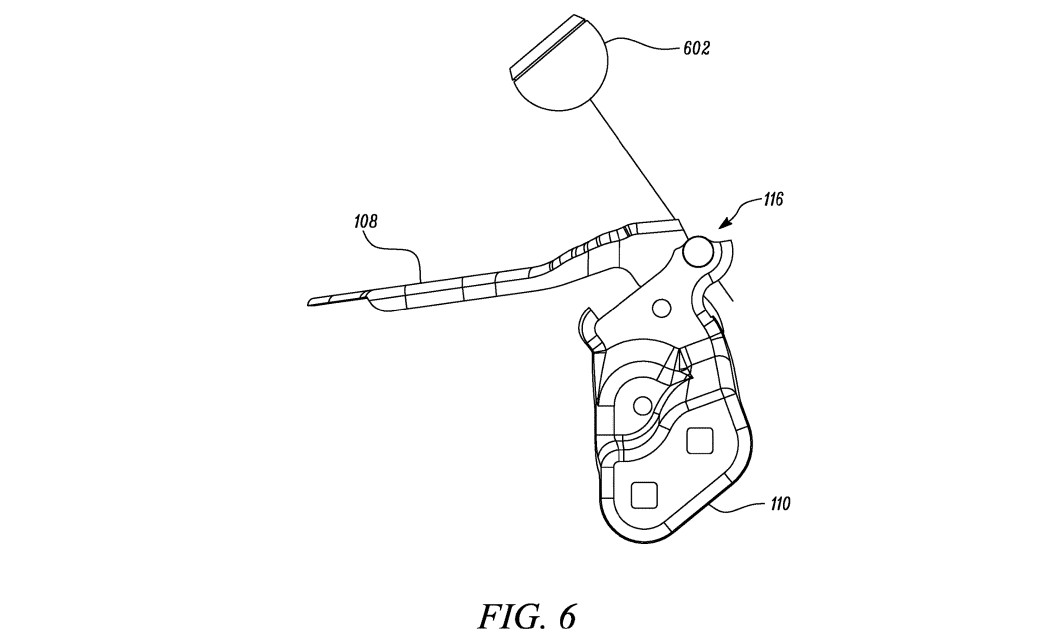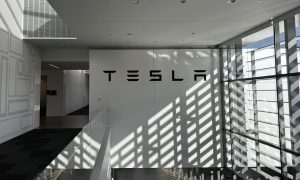

News
Tesla patents novel hood hinge that optimizes pedestrian safety during collisions
Tesla’s electric cars are known for being extremely quick, and they are also known for being extremely safe. The Model 3, the company’s most affordable car to date, for example, has aced safety ratings across the globe, earning a 5-Star rating from the NHTSA in the US, the Euro NCAP in Europe, and the ANCAP in Australia. Even the IIHS gave the Tesla Model 3 its highest rating, Top Safety Pick+.
But this is Tesla, and the electric car maker is known for being a company that refuses to stay still. Its cars are already quick enough to give passengers serious Gs while launching, yet the company remains hard at work on making them even quicker and more visceral in terms of speed (e.g. the Model S Plaid Powertrain). In the same light, while Teslas are already safe at their current state, it is no surprise that the company remains dedicated to finding ways to make its vehicles even safer, both for passengers in the cabin and for pedestrians on the road.
One such example of this was highlighted in a recently published patent that was simply titled “Hinge Assembly for a Vehicle Hood.” Based on the electric car maker’s discussion, the novel hinge assembly has the potential to protect pedestrians who happen to hit the vehicle’s hood during a collision. Similar systems are in place in vehicles today, though Tesla maintained that conventional designs have lots of areas for improvement.

“Modern vehicles are mandated by safety standards to protect pedestrians from head-impact injuries, including a scenario in which a pedestrian would contact the vehicle’s hood. To meet these requirements. Current state of the art safety systems are active systems that typically include a sensor system to detect a collision with pedestrian and fire (using a pyrotechnic) an actuator to lift the front hood into a protective position before pedestrian impact. However, such systems may be falsely triggered and can only be used once because the pyrotechnic is not reversible. The pyrotechnic is also expensive, adding to overall cost of the vehicle. Therefore, there is a need for a safety system that overcomes the aforementioned drawbacks.”
Tesla noted in its patent’s description that its hinge assembly includes a body member and a hood member, with the latter being “pivotally coupled with a body member through a pivot pin.” In the event of a collision, a portion of the vehicle’s hood member or body member “deforms such that the hood member or body member disengages from the pivot pin.” This allows Tesla to use the hinge as a passive pedestrian safety system that does not require any additional components such as sensors or controllers. The design outlined in Tesla’s patent is also more practical than the pyrotechnic system used in conventional pedestrian impact safety systems.
Tesla describes how its hood hinge works in a collision in the following section.

“FIG. 6 illustrates impact of a headform 602 on hinge assembly 116. Headform 602 represents the head (or portion thereof) of a pedestrian or other living being. As illustrated, when a collision occurs such that headform 602 hits a portion of hood member 108 of vehicle 100 along direction of an axis X-X′, a force is generated. When the force is great enough, the impact force causes hood member 108 to disengage from hinge assembly 116. The impact force typically causes deformation of portion 314 of hood member 108 adjacent to notch 312 such that pivot pin 202 disengages with second opening 304 of hood member 108. In embodiments, the width W of notch 312 is altered to change the impact force at which the hood member 108 disengages from hood member 108. In embodiments the impact force causes deformation of the pivot pin 202 to allow disengagement of hood member 108 from body member 110.
“In an event of collision, hood member 108 may disengage with hinge assembly 116 such that safety standards can be met. Hood member 108 may move down due to impact force and disengagement with hinge assembly 116. To allow movement of hood member 108, sufficient space may be provided by trimming away portions of hood member 108 and body member 110. Advantageously, this would lower weight of components while maintaining the safety standards for vehicle 100.”
Tesla is a carmaker that will likely never stay still. Despite its significant lead in the electric car segment thanks to its vehicles’ batteries and powertrain, Tesla is in a continuous process of improvement. The hood hinge outlined in this patent might be quite simple, but it contributes to the overall safety of Tesla’s lineup of vehicles nonetheless. Such initiatives, if any, further prove that when it comes to safety, no part is too small for innovation — and in the event of a collision, it’s these factors that can make all the difference.
Tesla’s patent for its hinge assembly could be accessed below.
Tesla Hood Patent by Simon Alvarez on Scribd
News
Tesla begins Robotaxi certification push in Arizona: report
Tesla seems serious about expanding its Robotaxi service to several states in the coming months.

Tesla has initiated discussions with Arizona transportation regulators to certify its driverless Robotaxi service in the state, as per a recent report from Bloomberg News. The move follows Tesla’s launch of its Robotaxi pilot program in Austin, Texas, as well as CEO Elon Musk’s recent comments about the service’s expansion in the Bay Area.
The Arizona Department of Transportation confirmed to Bloomberg that Tesla has reached out to begin the certification process for autonomous ride-sharing operations in the state. While details remain limited, the outreach suggests that Tesla is serious about expanding its driverless Robotaxi service to several territories in the coming months.
The Arizona development comes as Tesla prepares to expand its service area in Austin this weekend, as per CEO Elon Musk in a post on X. Musk also stated that Tesla is targeting the San Francisco Bay Area as its next major market, with a potential launch “in a month or two,” pending regulatory approvals.
Tesla first launched its autonomous ride-hailing program on June 22 in Austin with a small fleet of Model Y vehicles, accompanied by a Tesla employee in the passenger seat to monitor safety. While still classified as a test, Musk has said the program will expand to about 1,000 vehicles in the coming months. Tesla will later upgrade its Robotaxi fleet with the Cyercab, a two-seater that is designed without a steering wheel.
Sightings of Cybercab castings around the Giga Texas complex suggests that Tesla may be ramping the initial trial production of the self-driving two-seater. Tesla, for its part, has noted in the past that volume production of the Cybercab is expected to start sometime next year.
In California, Tesla has already applied for a transportation charter-party carrier permit from the state’s Public Utilities Commission. The company is reportedly taking a phased approach to operating in California, with the Robotaxi service starting with pre-arranged rides for employees in vehicles with safety drivers.
News
Tesla sets November 6 date for 2025 Annual Shareholder Meeting
The automaker announced the date on Thursday in a Form 8-K.

Tesla has scheduled its 2025 annual shareholder meeting for November 6, addressing investor concerns that the company was nearing a legal deadline to hold the event.
The automaker announced the date on Thursday in a Form 8-K submitted to the United States Securities and Exchange Commission (SEC). The company also listed a new proposal submission deadline of July 31 for items to be included in the proxy statement.
Tesla’s announcement followed calls from a group of 27 shareholders, including the leaders of large public pension funds, which urged Tesla’s board to formally set the meeting date, as noted in a report from The Wall Street Journal.
The group noted that under Texas law, where Tesla is now incorporated, companies must hold annual meetings within 13 months of the last one if requested by shareholders. Tesla’s previous annual shareholder meeting was held on June 13, 2024, which placed the July 13 deadline in focus.
Tesla originally stated in its 2024 annual report that it would file its proxy statement by the end of April. However, an amended filing on April 30 indicated that the Board of Directors had not yet finalized a meeting date, at least at the time.
The April filing also confirmed that Tesla’s board had formed a special committee to evaluate certain matters related to CEO Elon Musk’s compensation plan. Musk’s CEO performance award remains at the center of a lengthy legal dispute in Delaware, Tesla’s former state of incorporation.
Due to the aftermath of Musk’s legal dispute about his compensation plan in Delaware, he has not been paid for his work at Tesla for several years. Musk, for his part, has noted that he is more concerned about his voting stake in Tesla than his actual salary.
At last year’s annual meeting, TSLA shareholders voted to reapprove Elon Musk’s compensation plan and ratified Tesla’s decision to relocate its legal domicile from Delaware to Texas.
Elon Musk
Grok coming to Tesla vehicles next week “at the latest:” Elon Musk
Grok’s rollout to Tesla vehicles is expected to begin next week at the latest.

Elon Musk announced on Thursday that Grok, the large language model developed by his startup xAI, will soon be available in Tesla vehicles. Grok’s rollout to Tesla vehicles is expected to begin next week at the latest, further deepening the ties between the two Elon Musk-led companies.
Tesla–xAI synergy
Musk confirmed the news on X shortly after livestreaming the release of Grok 4, xAI’s latest large language model. “Grok is coming to Tesla vehicles very soon. Next week at the latest,” Musk wrote in a post on social media platform X.
During the livestream, Musk and several members of the xAI team highlighted several upgrades to Grok 4’s voice capabilities and performance metrics, positioning the LLM as competitive with top-tier models from OpenAI and Google.
The in-vehicle integration of Grok marks a new chapter in Tesla’s AI development. While Tesla has long relied on in-house systems for autonomous driving and energy optimization, Grok’s integration would introduce conversational AI directly into its vehicles’ user experience. This integration could potentially improve customer interaction inside Tesla vehicles.
xAI and Tesla’s collaborative footprint
Grok’s upcoming rollout to Tesla vehicles adds to a growing business relationship between Tesla and xAI. Earlier this year, Tesla disclosed that it generated $198.3 million in revenue from commercial, consulting, and support agreements with xAI, as noted in a report from Bloomberg News. A large portion of that amount, however, came from the sale of Megapack energy storage systems to the artificial intelligence startup.
In July 2023, Musk polled X users about whether Tesla should invest $5 billion in xAI. While no formal investment has been made so far, 68% of poll participants voted yes, and Musk has since stated that the idea would be discussed with Tesla’s board.
-

 Elon Musk1 week ago
Elon Musk1 week agoTesla investors will be shocked by Jim Cramer’s latest assessment
-

 Elon Musk3 days ago
Elon Musk3 days agoElon Musk confirms Grok 4 launch on July 9 with livestream event
-

 Elon Musk15 hours ago
Elon Musk15 hours agoxAI launches Grok 4 with new $300/month SuperGrok Heavy subscription
-

 News7 days ago
News7 days agoTesla Model 3 ranks as the safest new car in Europe for 2025, per Euro NCAP tests
-

 Elon Musk2 weeks ago
Elon Musk2 weeks agoA Tesla just delivered itself to a customer autonomously, Elon Musk confirms
-

 Elon Musk1 week ago
Elon Musk1 week agoxAI’s Memphis data center receives air permit despite community criticism
-

 Elon Musk2 weeks ago
Elon Musk2 weeks agoTesla’s Omead Afshar, known as Elon Musk’s right-hand man, leaves company: reports
-

 News2 weeks ago
News2 weeks agoXiaomi CEO congratulates Tesla on first FSD delivery: “We have to continue learning!”
















